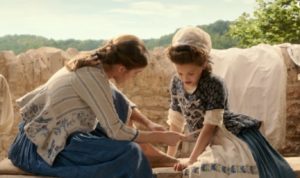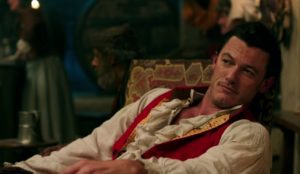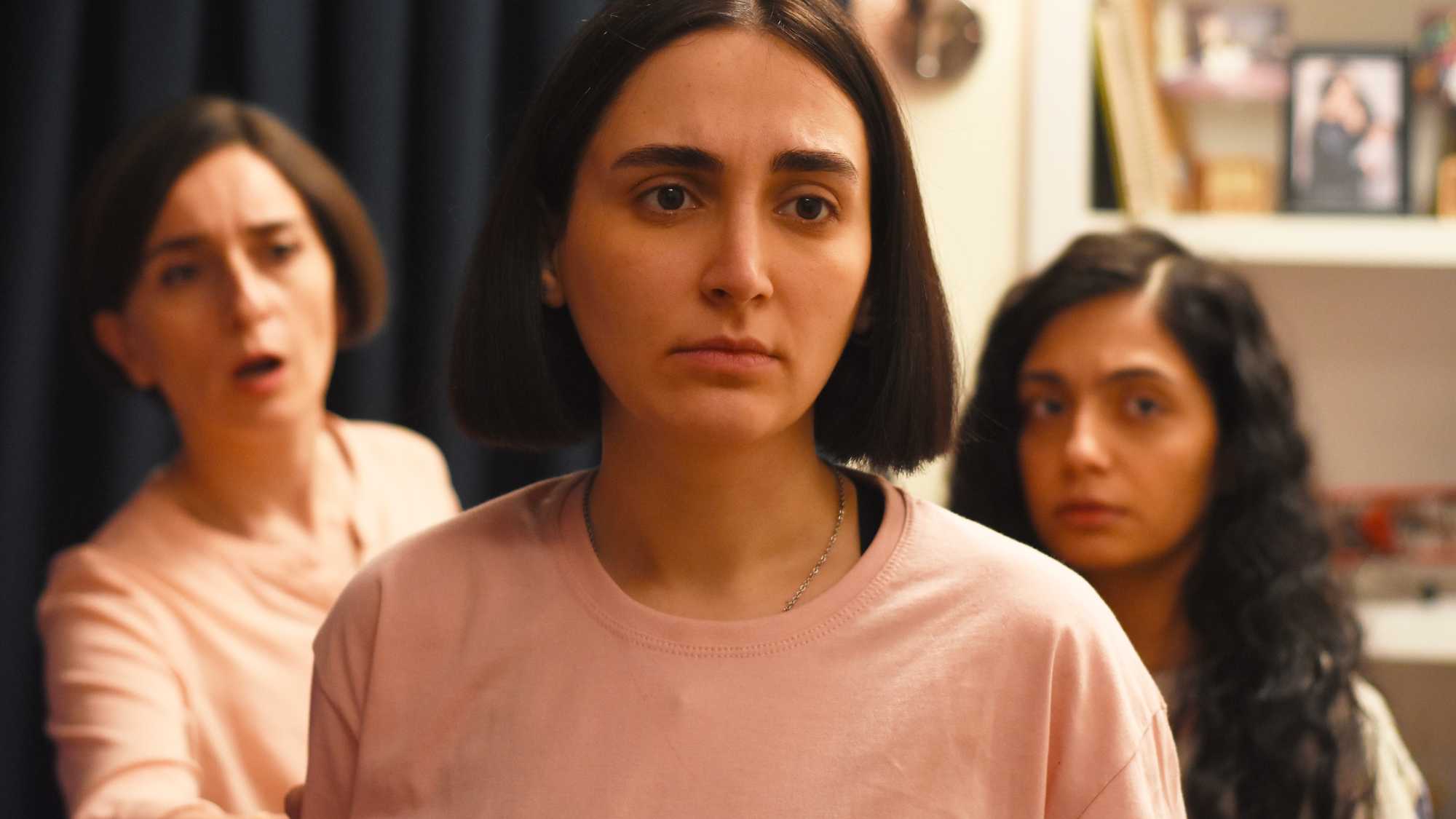Beauty is in the eye of the beholder. We see what we are looking for; our view of a person ? or a movie ? depends, to a great extent, on who we are. Beauty and the Beast is about seeing beauty despite outward appearances. Ironically, the villagers can see only Belle’s outward beauty ? calling it a “fair facade” ? while not seeing how beautiful she really is on the inside, too.
Because of the recent controversy over the film, many will be looking for “exclusively gay” moments in it. They may be able to find tiny hints, but in the searching for those moments, they may miss what is actually there. In my news piece about LeFou, I quoted blogger Amy Green, who reminds us “Fairy tales done well, the ones that last and resonate, are based on very simple, very deep truths.” If we look for them, the new Disney version of Beauty and the Beast conveys to us some of these deep truths.
Augustine said, “All truth is God’s truth.” And there is… well… truth in that statement. The “deep truths” in Beauty and the Beast are, if we have recognized them rightly as truths, God’s truths. I dare say, there are indeed Christian truths in it?specifically and especially in this particular Disney version of the story. Much has already been said about the movie. I’d like to focus my review on the Christian themes and truths in it.
I do not think it an accident this iteration of the tale moves the location of Belle’s source of reading material. In the 1991 animated version, Belle borrows her books from the local bookseller. This is a notion I have always found to be strange, given the provincial, narrow-minded nature of the town. How could such a business stay afloat in such a place? In the live-action version, Bell’s books come from the library located in the village church, run by clergyman P?re Robert. Through the years, the Church has been not only the guardian of the Gospel of The Book, but also the custodian of books in general. The Church has not been a perfect guardian and custodian by any means. She has been guilty at times of both perverting the Gospel and burning books. But, in general, throughout history, Christianity has promoted both the spiritual and the educational life.
That education should be for both male and female is supported by the words of Christ Himself. In Luke 10, we see Lazareth’s sister Mary “sitting at Jesus’ feet.”?She was with the other disciples learning from her Lord. In that day, that was not the role of women. Martha was busy about fulfilling her expected place, preparing and serving, and she was upset Mary was not helping her. But rather than rebuking Mary for being outside her station, He rebukes Martha.
“Martha, Martha, you are worried and bothered about so many things;?but only one thing is necessary, for Mary has chosen the good part, which shall not be taken away from her.” [Luke 10:41-42 NASB]
Throughout the world, girls are being denied the seat of learning by misogynistic cultures which seek to “put them in their place.” Whatever your beliefs about gender roles, Christ made it obvious women are not to be denied such training. It seems only appropriate the Belle of the 21st century is portrayed by a young woman who has stood for the rights of girls to receive an education. The scene where Belle is teaching a girl to read ? much to the dismay of the townspeople ? is especially poignant with Emma Watson playing the part.
obvious women are not to be denied such training. It seems only appropriate the Belle of the 21st century is portrayed by a young woman who has stood for the rights of girls to receive an education. The scene where Belle is teaching a girl to read ? much to the dismay of the townspeople ? is especially poignant with Emma Watson playing the part.
The village church is not only a reminder of the place of education, but of a recurring Christian theme in the story?sacrifice. When Belle enters the building, a large crucifix can be seen taking up most of the wall in the front of the sanctuary. Directors and cinematographers don’t take such details lightly. The cross is the a focal point throughout that?scene, and this could not be an accident. Belle will sacrifice herself to take her father’s place as a prisoner of the Beast. The Beast will sacrifice himself to rescue Belle from the wolves. Belle will continue to sacrifice her freedom to care for the Beast while he recovers from his wounds, even though she could have easily gotten away if she had left him to die in the woods. In a sequence new to this film, we find out Belle’s mother had sacrificed her own comfort, insisting Belle’s father, Maurice, take their very young child away lest she contract the plague from her. The Beast sacrifices what seems to be his only chance to become human again, freeing Belle so she could return to her father.
 The opposite of sacrifice is selfishness. In the new movie, Gaston is a war hero. We often speak of those who have gone to war as ones who have sacrificed for their country. But it is obvious Gaston is the type who had only his own glory in mind when he went to war. Or, at least, since he has returned from the war, he can only think about using his war hero status as a means of self-indulgence. His idea of what it means to be a hero can be seen near the end of the movie when he abandons the injured LeFou and goes off to hunt down the Beast uttering the words, “hero time.” He is not concerned about others; he is concerned with his own aggrandizement.
The opposite of sacrifice is selfishness. In the new movie, Gaston is a war hero. We often speak of those who have gone to war as ones who have sacrificed for their country. But it is obvious Gaston is the type who had only his own glory in mind when he went to war. Or, at least, since he has returned from the war, he can only think about using his war hero status as a means of self-indulgence. His idea of what it means to be a hero can be seen near the end of the movie when he abandons the injured LeFou and goes off to hunt down the Beast uttering the words, “hero time.” He is not concerned about others; he is concerned with his own aggrandizement.
Gaston is a picture of someone who is beautiful on the outside, yet hideous on the inside. The scriptures remind us that Satan appears as an angel of light. (2 Corinthians 11:14) A bitter spring can look refreshing, but it will reveal itself if you try to drink of it. (See James 3:11.) Despite having the admiration of almost all of the town, Gaston is still filled with bitterness because he cannot have the one thing he is denied?Belle. And he will stop at nothing to get what he wants. Maurice is in his way, so Gaston leaves him to be eaten by wolves. For self-absorbed people like this, other people are unimportant except as a means for their own promotion. He does not really want Belle; he justs wants the satisfaction of being known as the husband of “the most beautiful girl in town,” and raising “strapping boys” like himself. More trophies to show off with the antlers on his wall.
The Beast begins the movie much the same person as Gaston. He is a self-centered prince only interested in pomp and show. He tries to cover up the ugliness inside with French make-up and powdered wigs, and opulent parties. While the “curse” pronounced by the enchantress seems harsh, it is actually the best thing which could have happened to him. It helps him see beyond the make-up and opulence and get a glimpse of who he really is. This is what the scriptures do.
Anyone who listens to the word but does not do what it says is like someone who looks at his face in a mirror?and, after looking at himself, goes away and immediately forgets what he looks like.?But whoever looks intently into the perfect law that gives freedom, and continues in it?not forgetting what they have heard, but doing it?they will be blessed in what they do. [James 1:23-25 NIV]
Every time the Beast looked into a mirror, it reminded him of who he really was. Belle coming into his life will greatly change him, but it seems obvious to me there had been changes in his attitude before she arrived. This is obvious in the new version of the movie as provision is made for Maurice in the castle with the Beast’s knowledge. He is frightened away not by the Beast, but by the enchanted, talking objects. When I first saw the movie, I found it strange the stable was equipped with hay and water. But I think the Beast had already taken to heart?at least somewhat?a lesson about hospitality to strangers. He seems to be ready to help any who would ? however unlikely ? stop by in need of food and lodging. He only takes Maurice as his prisoner after he “steals” the rose. The filmmakers have gone back to the original source?Madame de Villeneuve’s version of the tale. (They name the village after her.) In La Belle et al B?te, the father is also provided for by an unseen host, and the Beast only takes him prisoner after he plucks the rose?an act the Beast sees as ungratefulness. So, the trespass is not trespassing (like in the animated version), but thievery and ungratefulness.
attitude before she arrived. This is obvious in the new version of the movie as provision is made for Maurice in the castle with the Beast’s knowledge. He is frightened away not by the Beast, but by the enchanted, talking objects. When I first saw the movie, I found it strange the stable was equipped with hay and water. But I think the Beast had already taken to heart?at least somewhat?a lesson about hospitality to strangers. He seems to be ready to help any who would ? however unlikely ? stop by in need of food and lodging. He only takes Maurice as his prisoner after he “steals” the rose. The filmmakers have gone back to the original source?Madame de Villeneuve’s version of the tale. (They name the village after her.) In La Belle et al B?te, the father is also provided for by an unseen host, and the Beast only takes him prisoner after he plucks the rose?an act the Beast sees as ungratefulness. So, the trespass is not trespassing (like in the animated version), but thievery and ungratefulness.
The Prince?has changed at least a little since becoming a Beast, but he still needs to be transformed. Belle will teach him how to love, but in order for that love to be complete, she must love him, and he must be transformed back into a human being. On the Special Features disc of?the 2010 Diamond Edition of the animated film,?Glen Keane, the?supervising animator for the Beast, talks about the transformation scene. (See clip at the end of this review.) As a Christian, this scene resonated with him; it reminded him of how the Bible describes us as “new creatures” in Christ (2 Corinthians 5:17).?This transformation is a foundational truth of Christianity. We are changed from the inside out.
Even before?Madame de Villeneuve sat down to compose her version of Beauty and the Beast, the folktale had undoubtedly “grown in the telling,” and it continued to grow each time it had been retold. Fairy tales have always been embellished and changed as they are rewritten ? sometimes for the better, sometimes for the worse, sometimes with mixed results. Disney’s latest retelling, I think, has made changes which have greatly improved what they had done before. Many of the changes are subtle, but they all serve to flesh out the boney frame of the previous movie. The new songs and flashback scenes add an emotional weight which was sorely needed. I was moved by it in a way the animated movie never could have.
Some have talked about golden statues in the future for the film. That may?well be. But, regardless of the public accolades which may or may not come, 2017’s Beauty and the Beast will always ring golden with “deep truths” to me.
Available today on Blu-ray and DVD, special features include a look at the cast’s table read (which is more elaborate than most), and the process of transforming a beloved animated feature into a live-action fantasy in “A Beauty of a Tale.” Emma Watson shares the background of several of the women involved in production in “The Women Behind?Beauty and the Beast. Other musical special features connect with Celina Dion (“Tale as Old as Time”), show how the production transformed the scenes involving music, the making of the music video, and the alternative version of Belle’s “Days in the Sun.” [The Blu-ray also allows you to skip straight to a song to sing along!] For those on the go, including the Digital HD in the Blu-ray combo pack allows for taking the film anywhere and everywhere!






Great article! I agree, the movie was very well done. :3 I love how fantasy movies can convey deep truths.
Thanks, Christa.
For anyone interested, Glen Keane who drew the Beast and was inspired by 2Cor 5:17 has a children’s series of books called The Adventures of Adam Raccoon. Each story is based on a Biblical theme.